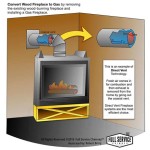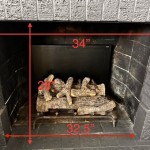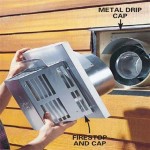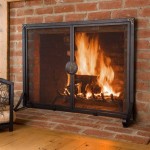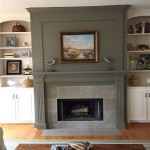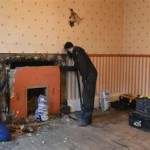Gas Fireplaces with Stone: A Harmony of Warmth and Aesthetics
Gas fireplaces with stone surrounds represent a popular choice for homeowners seeking both the ambiance of a traditional fireplace and the convenience of gas fuel. The combination of a gas fire with the visual appeal of natural or manufactured stone creates a focal point in any room, enhancing both the aesthetic and practical value of the living space. This type of fireplace offers a versatile design option, ranging from rustic and natural to modern and sleek, depending on the style of stone selected and the overall architectural design.
This article will delve into the various aspects of gas fireplaces with stone, including the types of stone commonly used, the advantages of this combination, considerations for installation, and maintenance requirements. Understanding these elements allows homeowners to make informed decisions when selecting and incorporating a gas fireplace with a stone surround into their homes.
Types of Stone Used in Gas Fireplace Surrounds
The selection of stone plays a crucial role in determining the overall aesthetic of a gas fireplace. A wide variety of natural and manufactured stones are available, each offering unique textures, colors, and patterns. Natural stones, such as granite, marble, limestone, and slate, are quarried directly from the earth, providing inherent variations and character. Manufactured stones, also known as cultured stone, are engineered to replicate the appearance of natural stone while often offering advantages in terms of weight, cost, and ease of installation.
Natural Stone: As previously mentioned, a variety of natural stones may be used for gas fireplace surrounds. Here are a few examples:
Granite: Known for its durability and resistance to heat and scratches, granite is a popular choice for fireplace surrounds. It is available in a wide range of colors and patterns, ranging from speckled and mottled to veined and swirled. Granite offers a sophisticated and elegant look and is a good choice for contemporary and traditional settings.
Marble: Prized for its luxurious appearance and smooth texture, marble adds a touch of elegance and refinement to any room. Its veined patterns and subtle color variations create a visually appealing focal point. However, marble is more porous than granite and requires more sealing and care to prevent staining.
Limestone: With its creamy tones and subtle textures, limestone evokes a sense of warmth and natural beauty. Limestone is often used in traditional and rustic settings. It is relatively soft, making it easier to work with, but it also requires regular sealing to protect it from moisture and staining.
Slate: Characterized by its layered appearance and earthy tones, slate offers a rustic and natural look. It is a durable and heat-resistant stone, making it a practical choice for fireplace surrounds. Slate is available in various colors, ranging from gray and black to brown and green.
Manufactured Stone: Manufactured stone is a cost-effective alternative to natural stone, offering a similar aesthetic appeal at a lower price point. It is typically made from a mixture of cement, aggregates, and pigments, molded to replicate the look and texture of natural stone. Manufactured stone is often lighter in weight than natural stone, making it easier to install and requiring less structural support.
The choice between natural and manufactured stone depends on individual preferences, budget constraints, and design considerations. Natural stone offers inherent uniqueness and character, while manufactured stone provides consistency and affordability.
Advantages of Gas Fireplaces with Stone Surrounds
Gas fireplaces with stone surrounds offer a multitude of benefits, combining the practicality of gas fuel with the aesthetic appeal of stone. These advantages contribute to the growing popularity of this type of fireplace among homeowners.
Convenience: Gas fireplaces offer unparalleled convenience compared to traditional wood-burning fireplaces. They ignite with the push of a button or the flip of a switch, eliminating the need to gather, stack, and store firewood. Gas fireplaces also produce consistent and controllable heat, allowing homeowners to easily adjust the temperature to their desired comfort level.
Efficiency: Gas fireplaces are typically more energy-efficient than wood-burning fireplaces, converting a higher percentage of fuel into usable heat. This translates to lower heating costs and reduced environmental impact. Modern gas fireplaces are designed with features such as sealed combustion chambers and direct venting, which further enhance their energy efficiency.
Aesthetic Appeal: The combination of a gas fire with a stone surround creates a visually stunning focal point in any room. Stone adds texture, depth, and character to the fireplace, enhancing its overall aesthetic appeal. The wide variety of stone types and styles available allows homeowners to customize the look of their fireplace to complement their existing décor.
Cleanliness: Gas fireplaces produce significantly less smoke, ash, and soot compared to wood-burning fireplaces, resulting in a cleaner and healthier indoor environment. This reduces the need for frequent cleaning and maintenance, saving homeowners time and effort. The absence of wood-burning byproducts also minimizes the risk of chimney fires and other related hazards.
Versatility: Gas fireplaces with stone surrounds can be installed in a variety of locations, including living rooms, bedrooms, and even outdoor spaces. They can be incorporated into existing fireplaces or installed as freestanding units. The versatility of gas fireplaces allows homeowners to enjoy the warmth and ambiance of a fire in almost any setting.
Installation and Maintenance Considerations
Proper installation and regular maintenance are essential for ensuring the safe and efficient operation of a gas fireplace with a stone surround. These considerations should be carefully addressed to maximize the lifespan and performance of the fireplace.
Professional Installation: It is highly recommended to have a gas fireplace installed by a qualified professional with experience in gas line connections, venting systems, and stone masonry. A professional installer will ensure that the fireplace is installed according to local codes and regulations, minimizing the risk of gas leaks, carbon monoxide poisoning, and other potential hazards. Proper installation also ensures that the fireplace operates efficiently and safely.
Venting Requirements: Gas fireplaces require proper venting to exhaust combustion gases safely outside the home. The type of venting system required depends on the type of gas fireplace and the building's construction. Common venting options include direct vent, B-vent, and vent-free. Direct vent fireplaces draw combustion air from outside and exhaust gases directly outside through a sealed vent system. B-vent fireplaces use a chimney to exhaust gases, while vent-free fireplaces do not require venting but are subject to specific restrictions and regulations.
Stone Installation: The installation of the stone surround requires careful attention to detail to ensure a secure and aesthetically pleasing finish. This typically involves preparing the fireplace surround with a suitable substrate, such as cement board or backer board, and applying a layer of mortar to adhere the stone to the substrate. The stones are then carefully positioned and leveled, taking into account the desired pattern and spacing. Grouting may be required to fill the gaps between the stones and create a seamless finish.
Regular Maintenance: Regular maintenance is crucial for ensuring the safe and efficient operation of a gas fireplace. This includes annual inspections by a qualified technician to check for gas leaks, carbon monoxide emissions, and other potential problems. The fireplace should also be cleaned regularly to remove dust, dirt, and debris from the burner assembly, pilot light, and venting system. The glass door of the fireplace should be cleaned with a specialized cleaner to remove soot and smudges.
Stone Care: The stone surround also requires regular care to maintain its appearance and prevent damage. Natural stone should be sealed periodically to protect it from moisture, stains, and scratches. The frequency of sealing depends on the type of stone and the level of exposure to water and other contaminants. Manufactured stone may require less maintenance, but it should still be cleaned regularly with a mild detergent and water to remove dirt and grime.
By following these installation and maintenance guidelines, homeowners can ensure that their gas fireplace with a stone surround operates safely, efficiently, and reliably for many years to come.

Can I Install Stone Veneer Around My Gas Fireplace Stoneyard
Debating A Modern Or Traditional Fireplace Heat Glo

Stone Veneer Fireplaces Long Island Ny Fireplace Inserts Wood Stove Gas

Pin On House
Gas Fireplace And Stone Surround The Grate Haus

Stone Fireplaces

Jade Series Linear Gas Fireplace By Majestic S Fireplaces

Cal Flame Stone Veneer Gas Outdoor Fireplace Frp908 3 Modern Ions

7 Fireplace Surround Ideas That Will Ignite The Room

Fireplaces Utah County Hearth And Home Distributors Gas
Related Posts

